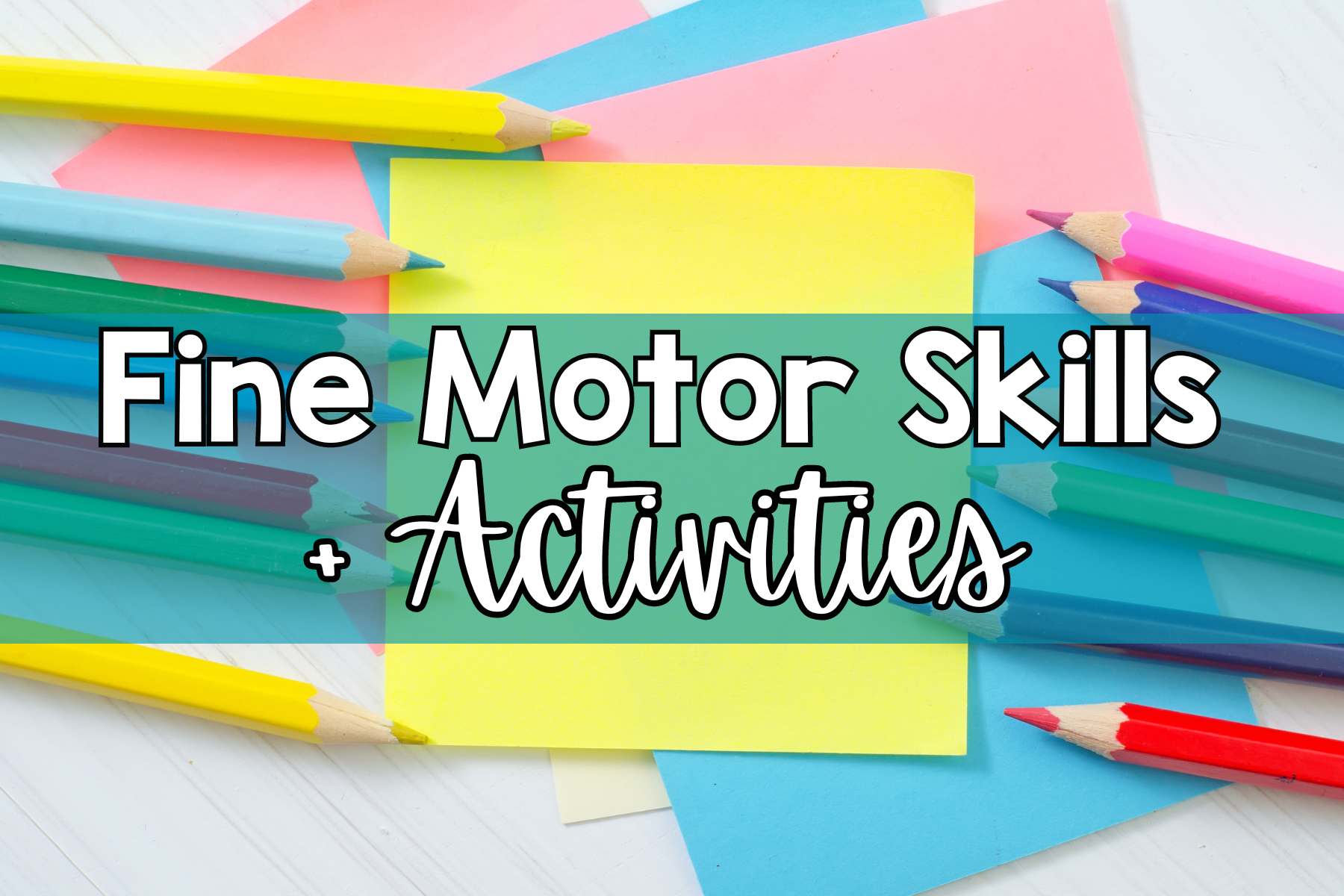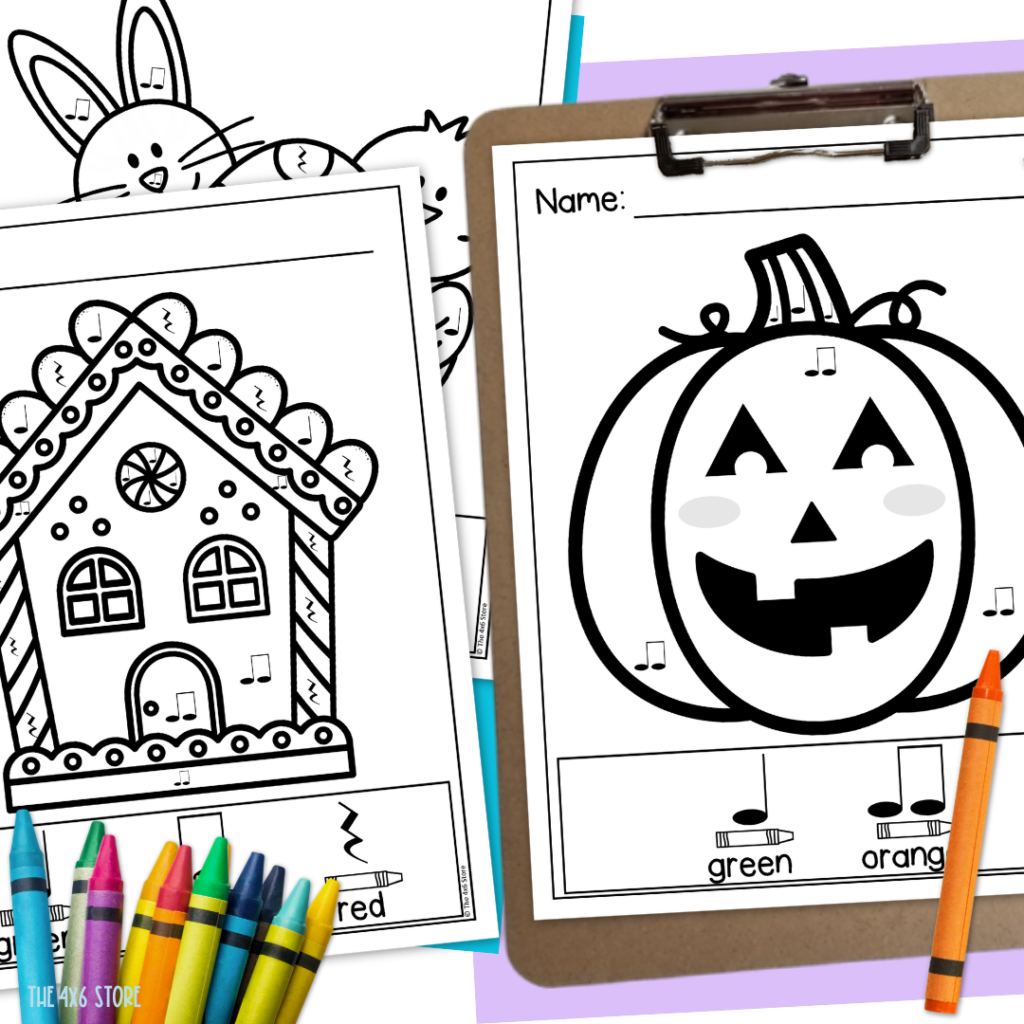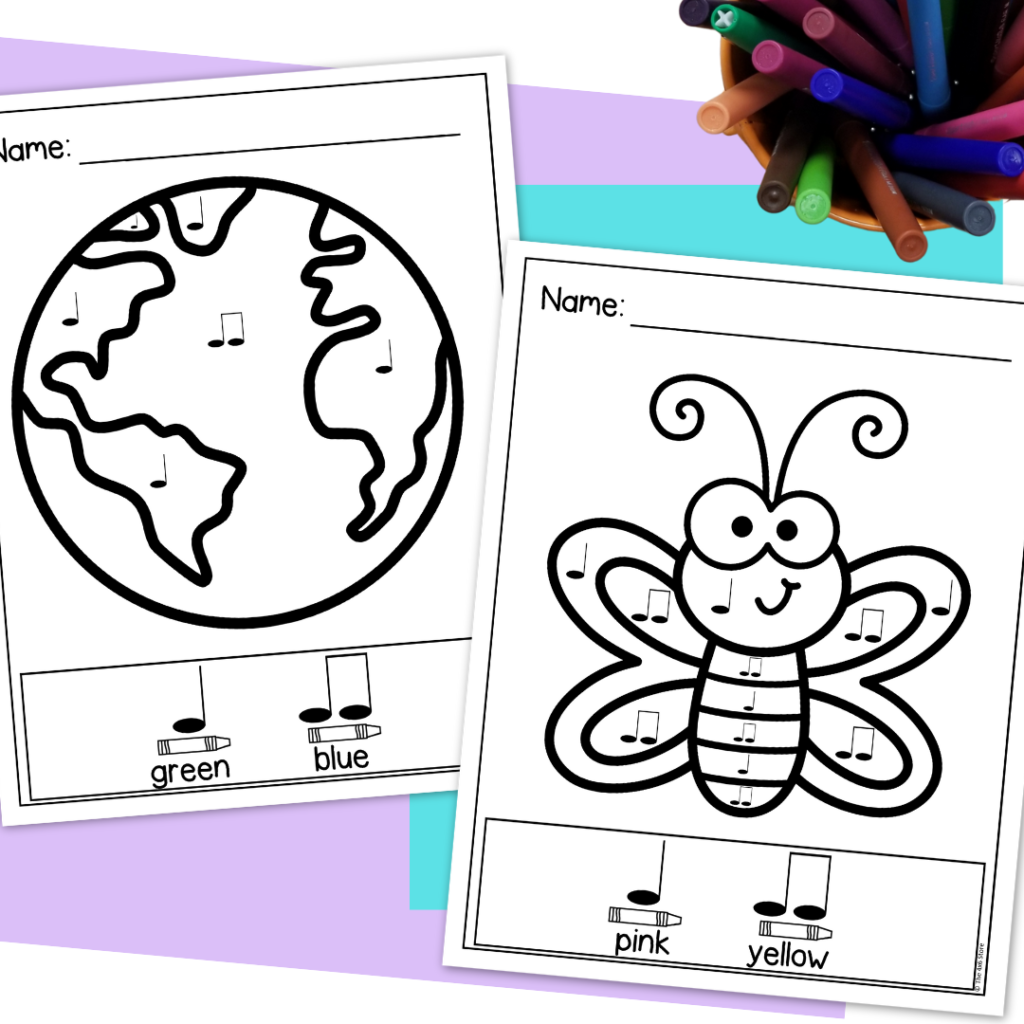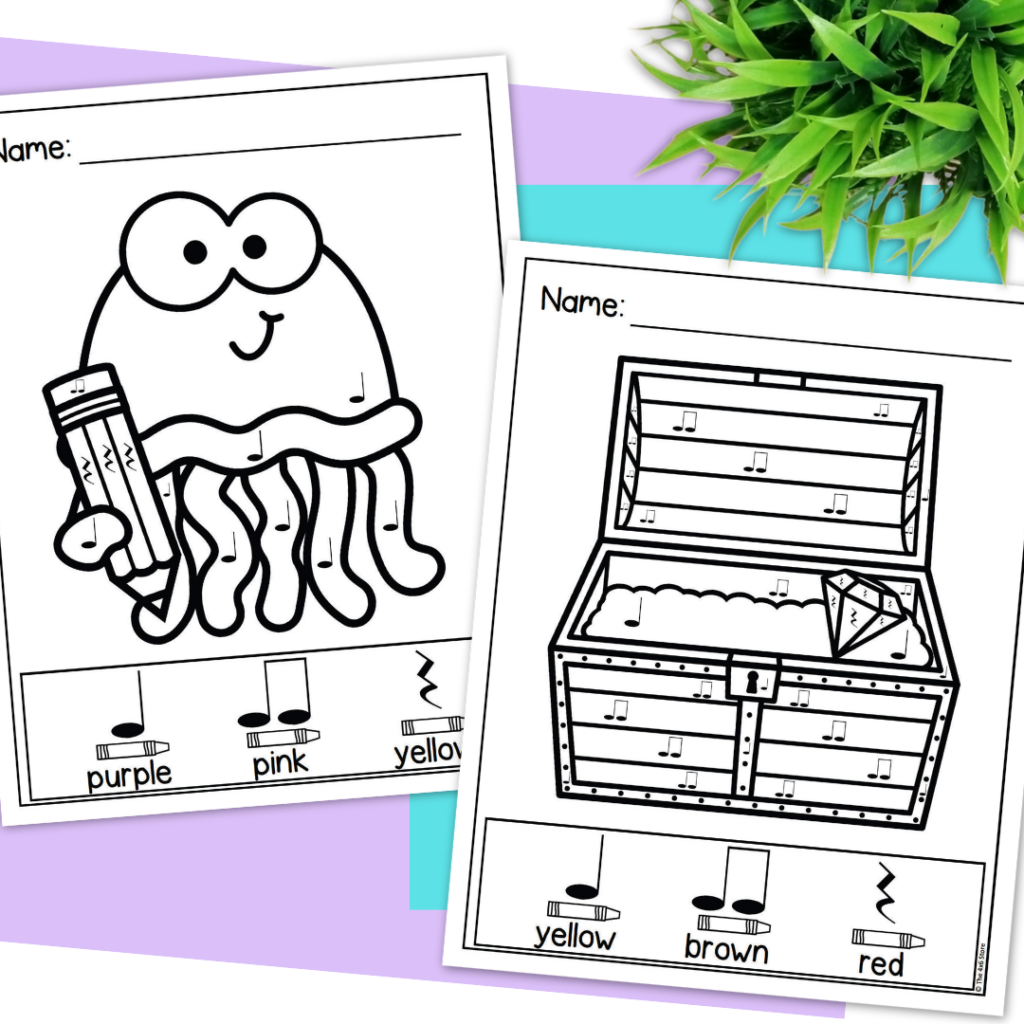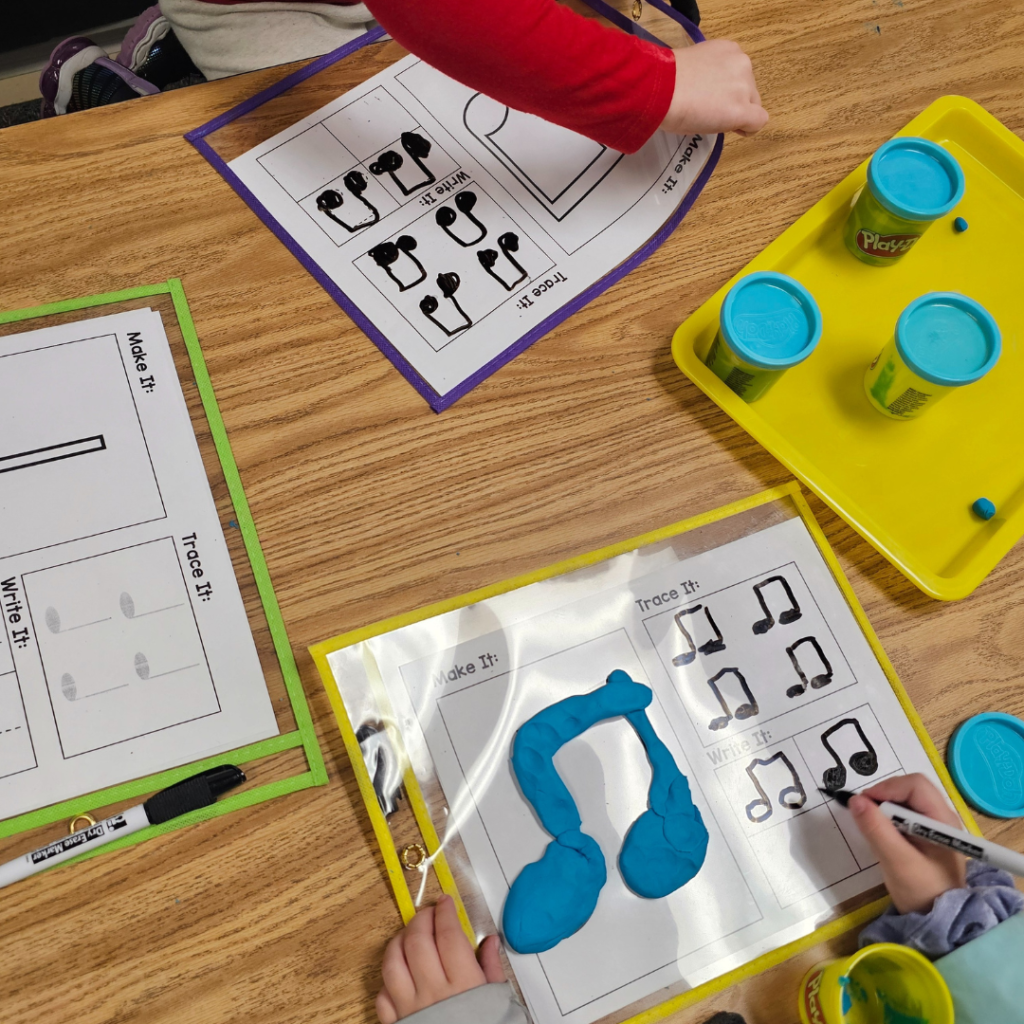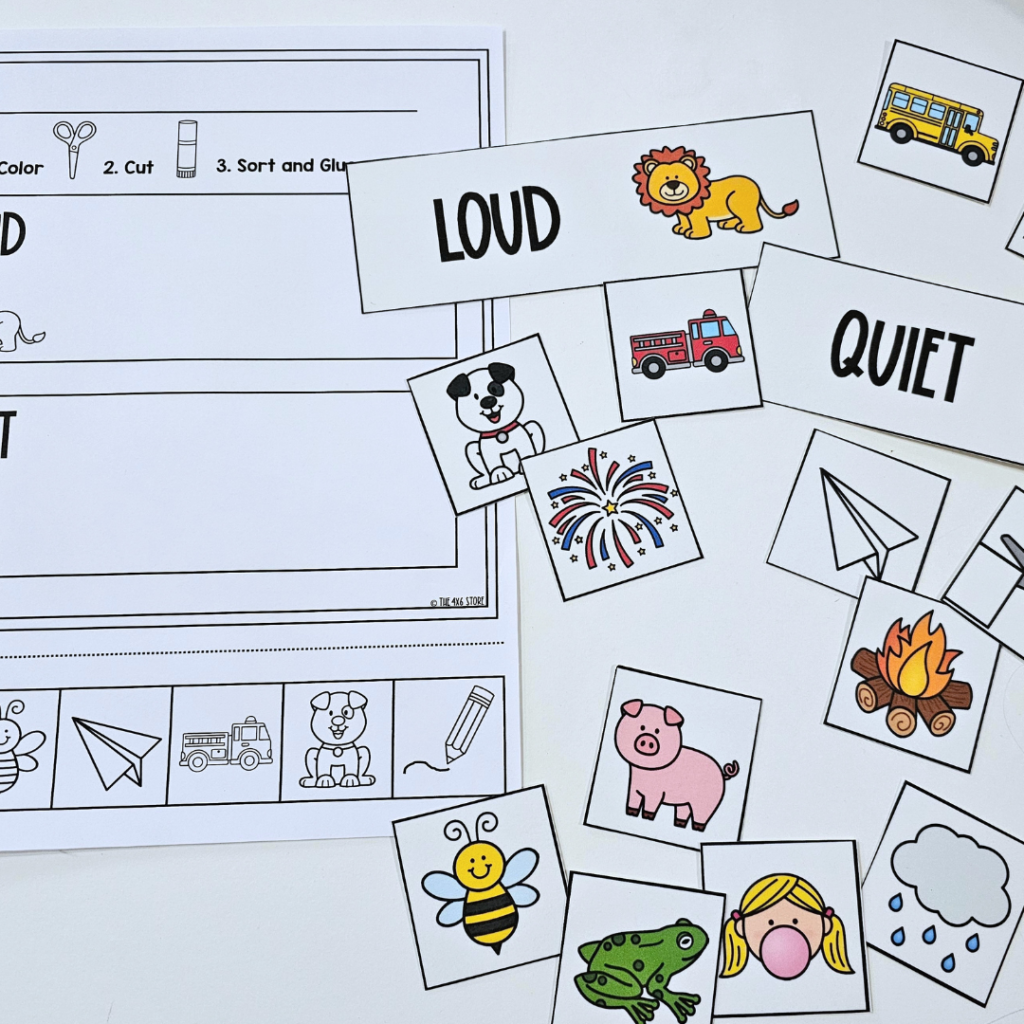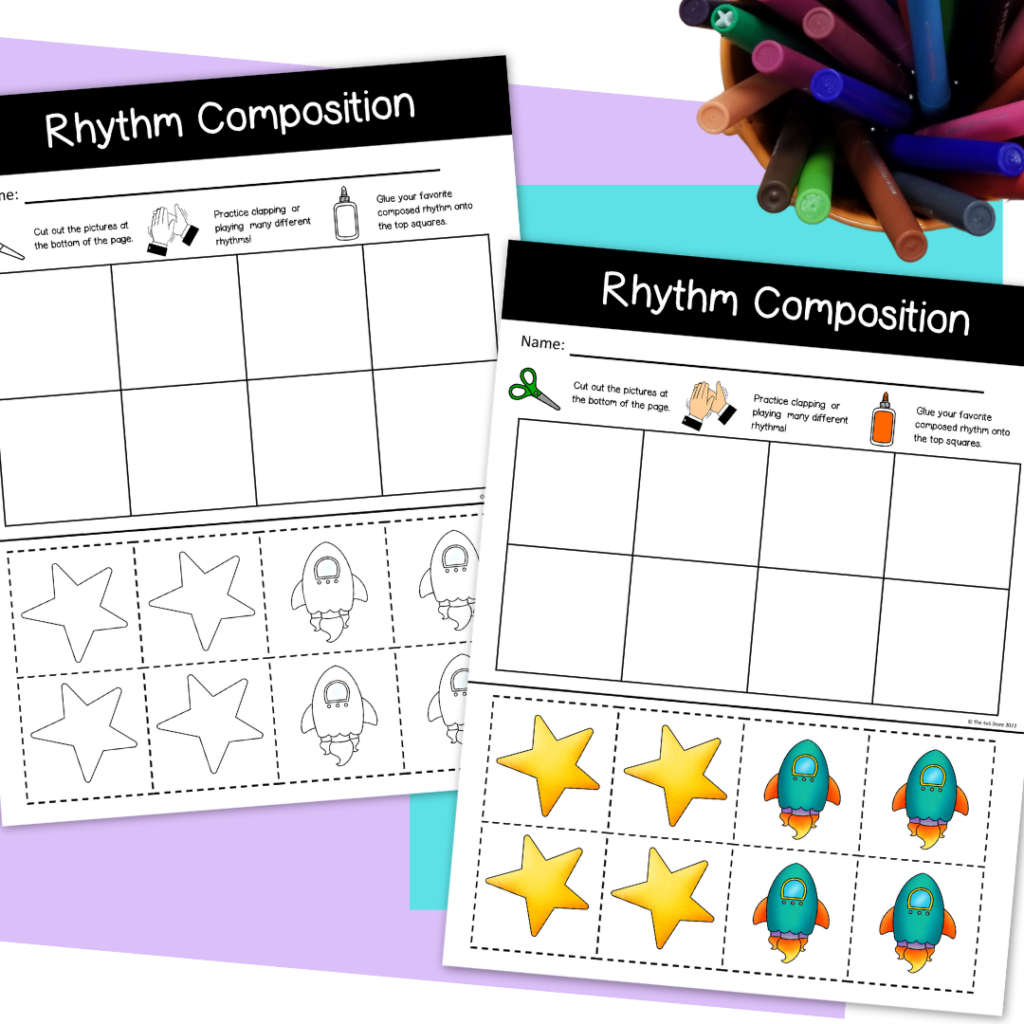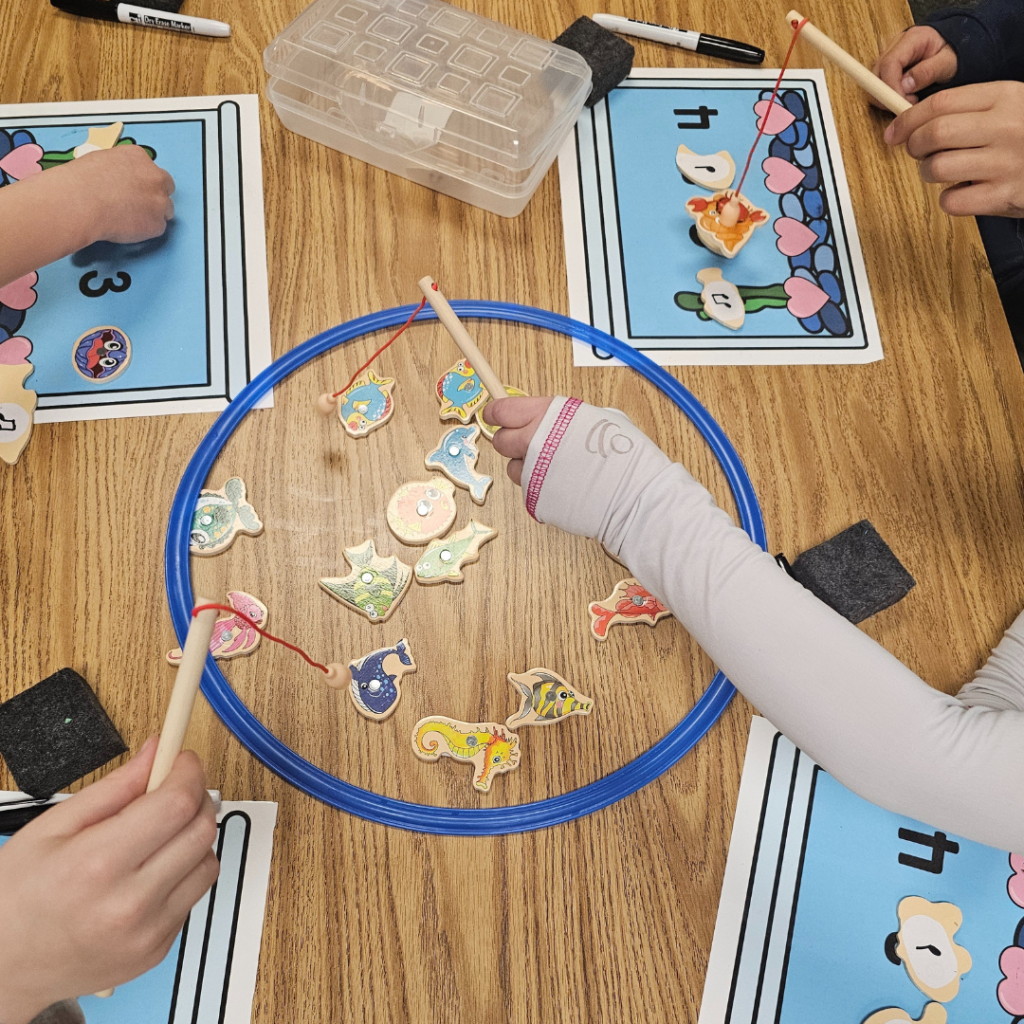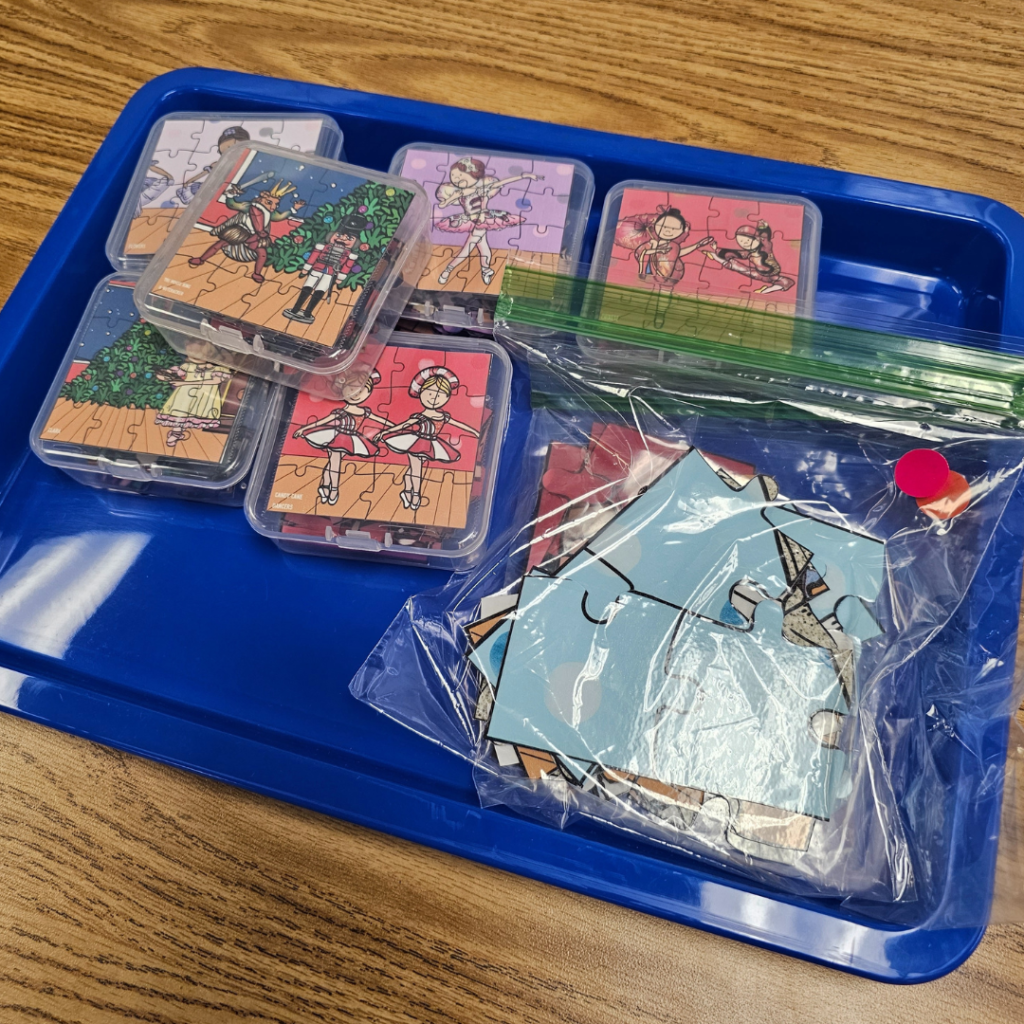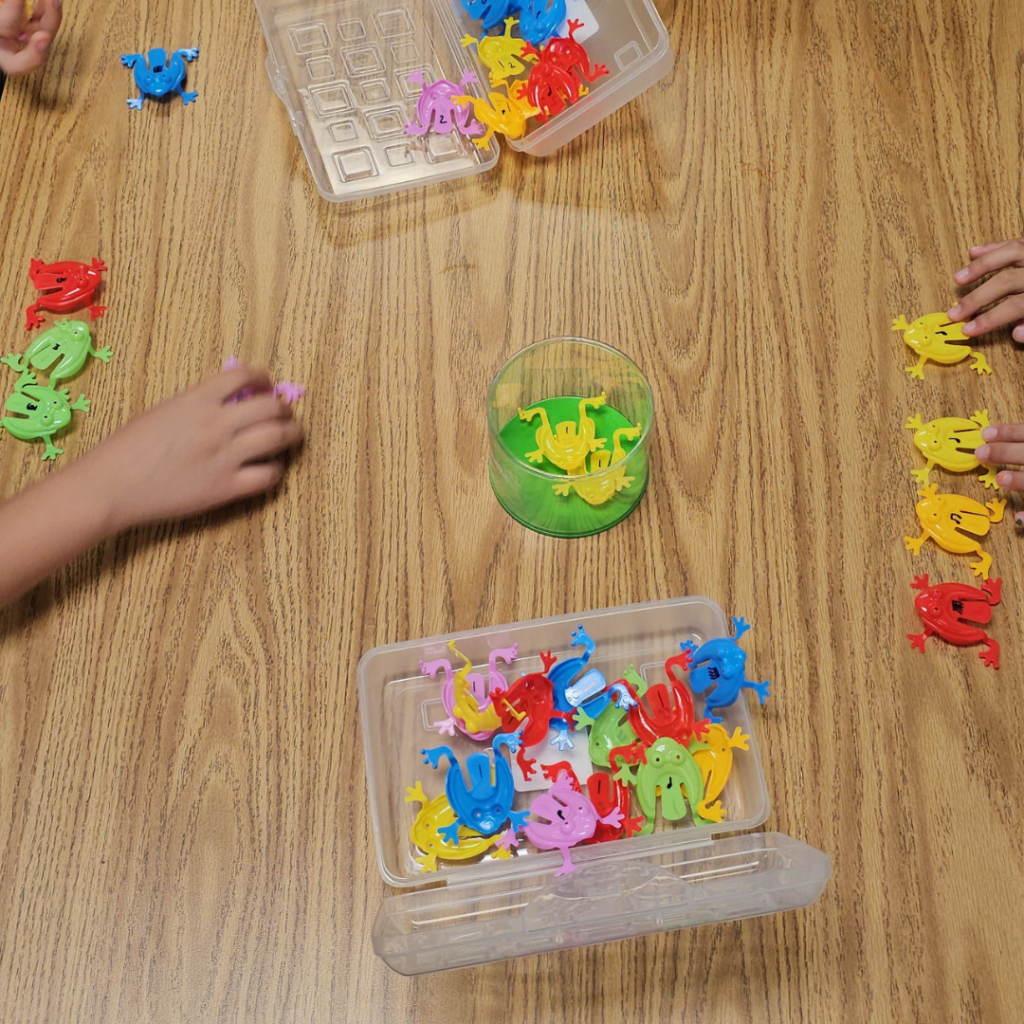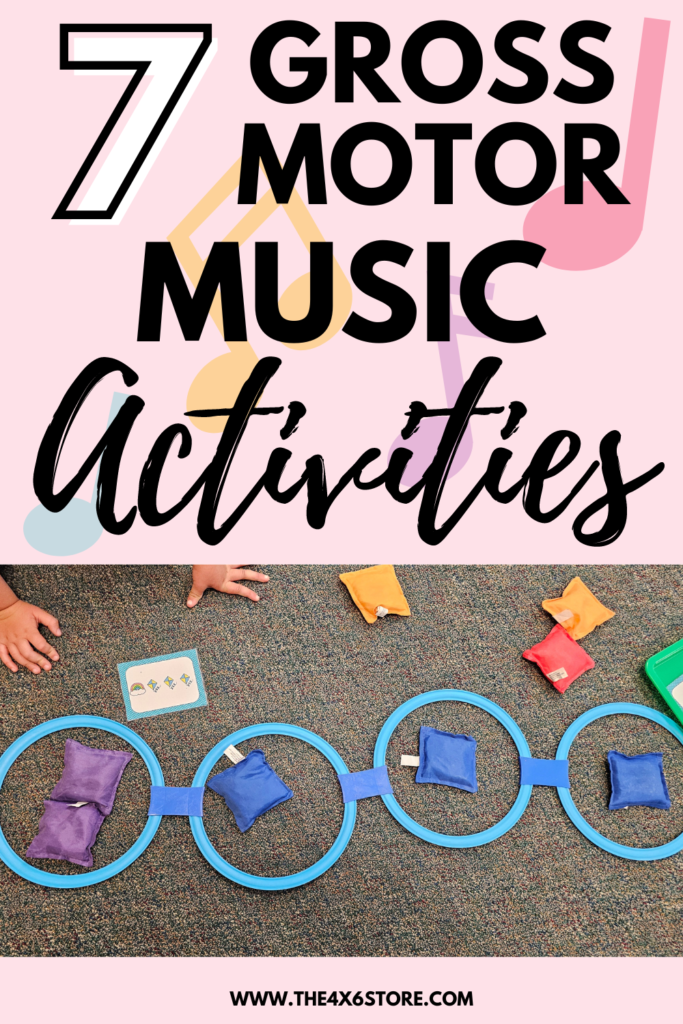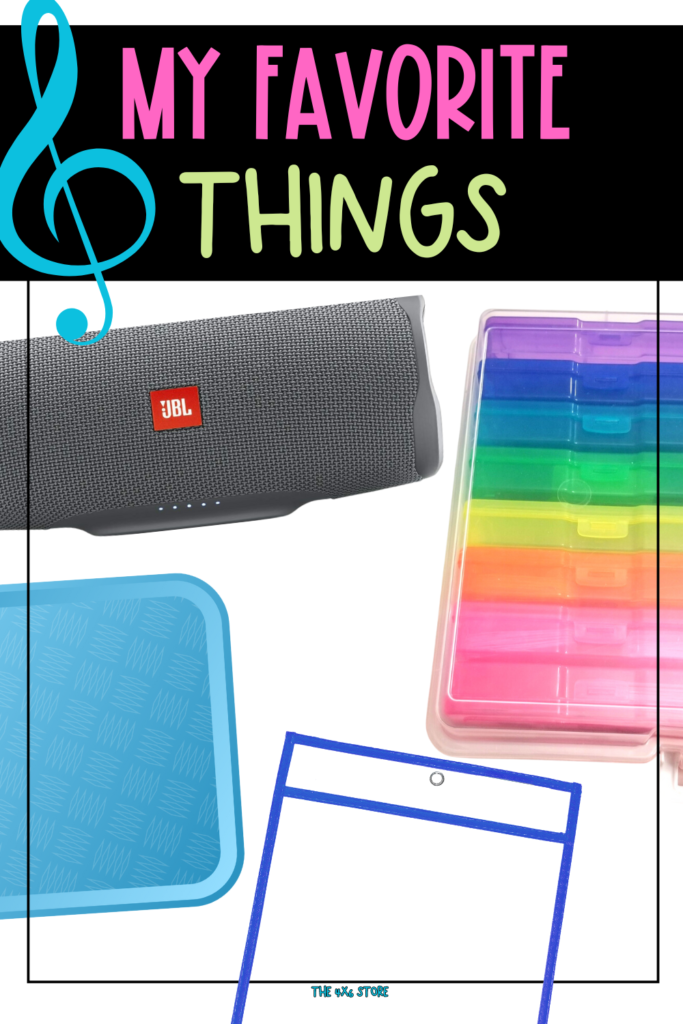Fine Motor Play-Based Activities for Early Elementary Music
Imagine trying to get a kindergarten student to draw a legible treble clef on a staff.
Did you chuckle or roll your eyes? I did both!
Most kindergarten students are not going to get music theory through paper-pencil activities. Their fine motor skills simply aren’t there yet! Complicated writing – like a treble clef – takes the development of their fine motor skills.
But there are things you can do to begin to develop and refine those fine motor skills for your future instrumentalists in your own music classroom!
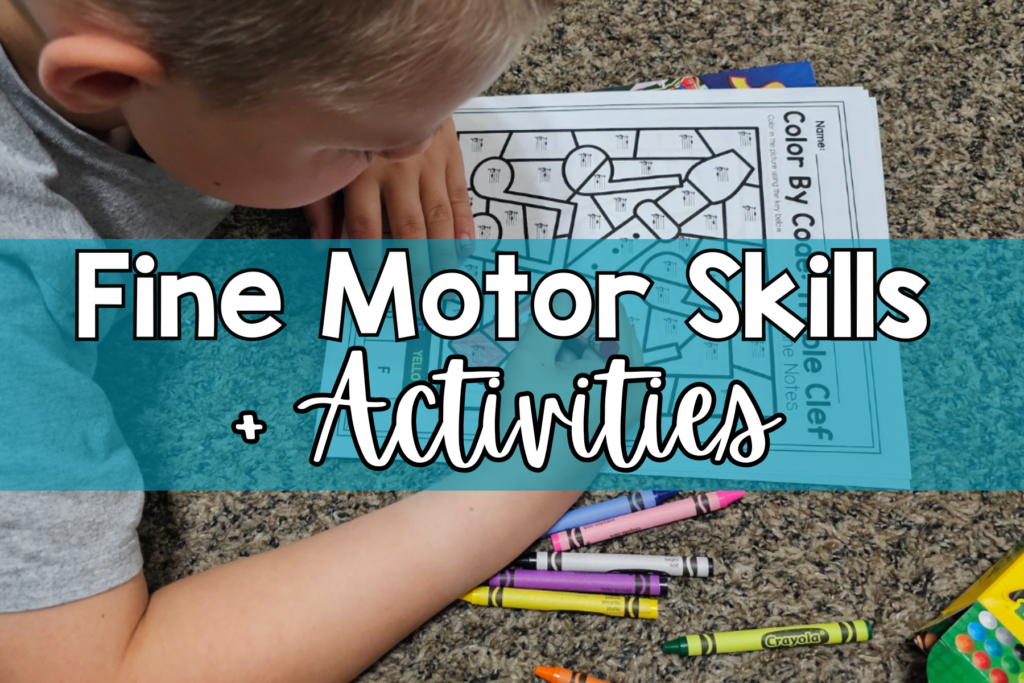
Table of Contents
What are fine motor skills
- Setting the Groundwork in Kindergarten: Building Blocks for Future Musicians
- The Natural Progression of Musical Instruments
6 Fine Motor Activities for the Early Elementary Classroom
This post contains affiliate links. As an Amazon Associate, I earn from qualifying purchases at no extra cost to you! All affiliate links in this post will be marked with an *. My participation in the Amazon Associate program helps keep other “annoying” advertisements off my website. – Thanks!

What are Fine Motor Skills?
Fine motor skills are those small, precise movements we make with our hands, fingers, and wrists. They are the skills kids need to develop to do activities that require smaller, more precise movements – like holding a pencil or playing the piano.
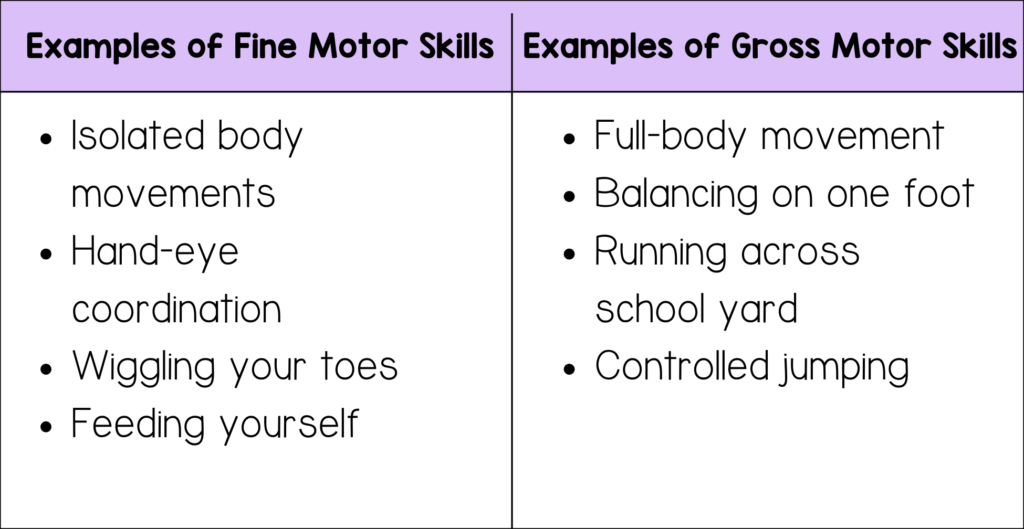
Fine motor skills can be developed along side gross motor skills. (If you want to catch my post on gross motor skills, find it here.) Keep the expectation in mind that students without solid gross motor skills will likely find fine motor skills more difficult and frustrating. It takes developing the larger muscle groups first before the smaller muscles catch up.

Setting the Groundwork in Kindergarten: Building Blocks for Future Musicians
Fine motor skills can often be overlooked when we think about early elementary music education. Developing fine motor skills with your youngest musicians is like planting the seeds for a strong musical future! At this age, children are naturally curious and eager to explore new things. Music class is the perfect playground for their growing minds and bodies. By practicing small hand and finger movements, like clapping rhythms, using Play-Doh, or even holding rhythm sticks, young kids begin to develop the coordination they’ll need for playing instruments in the upper grade levels.
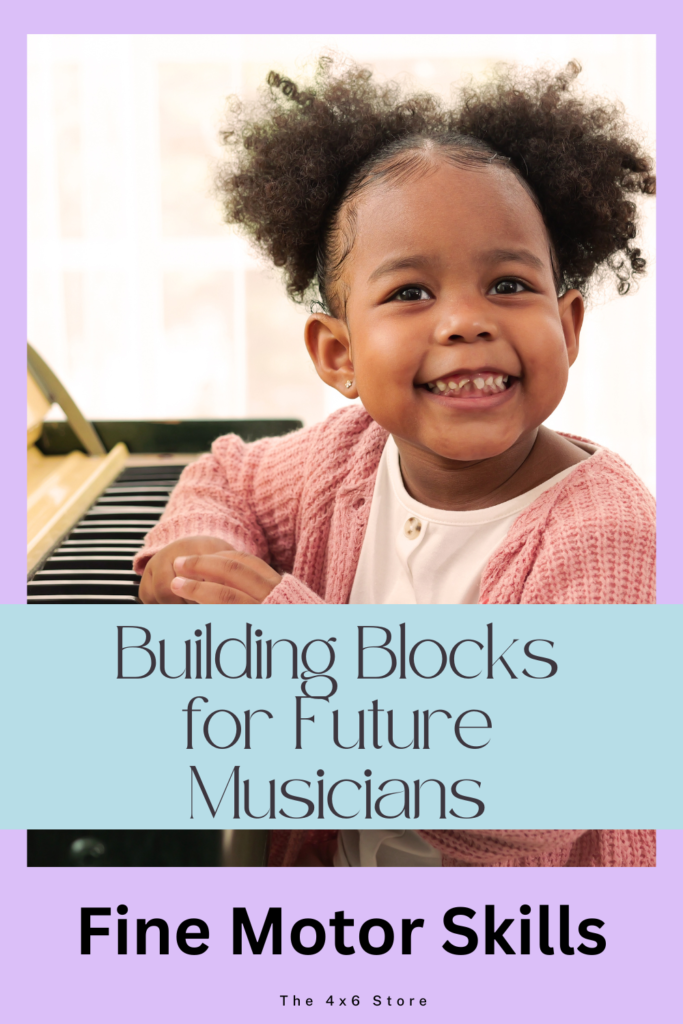
These early experiences help children strengthen their hands and fingers while teaching them how to move with purpose and control. Whether it’s learning how to grip a mallet or pinch their fingers to play a small percussion instrument, these activities train their muscles and minds to work together. This foundation is super important because, as they grow, those same fine motor skills will be essential for playing more complex instruments like the piano, violin, or clarinet.
What’s great is that these skills are not only helping them with music—they’re also improving their ability to do other important tasks like writing, drawing, and tying their shoes! By developing fine motor control in kindergarten and first grade, you are setting your students up for success in both their musical journey and everyday life! It’s the first step in turning little hands into future instrumentalists, ready to take on bigger challenges in elementary school and beyond!
The Natural Progression of Musical Instruments
As kids’ fine motor skills grow stronger, so does their ability to tackle more complex musical instruments! In the early stages, children start with simple instruments that are fun and easy to play. Our youngest musicians often start with percussion instruments like maracas, tambourines, rhythm sticks, or drums. These instruments don’t require a lot of precise finger control, but they help kids get used to making sounds with their hands. It’s all about big, gross motor playing at this stage, which is perfect for building a strong foundation.

As fine motor skills develop, kids can begin playing instruments that require more control and precision. For example, instruments requiring a more precise mallet strike like the xylophone or the piano/keyboards involving using fingers to press keys in a specific order. These instruments introduce children to coordinating their fingers in specific ways, teaching them how to move with greater accuracy. They’re still simple enough for young learners, but now the focus shifts from larger movements to more focused, smaller ones.
Once their fine motor skills are even more refined – usually around late elementary or middle school – children can move on to more advanced instruments like the violin, flute, or guitar. These instruments demand fine finger control. This can look like pressing strings, covering small holes, or moving a bow with just the right amount of pressure. At this stage, they begin mastering using both hands independently.

As you can see, this natural progression allows kids to move from instruments that focus on big movements to those requiring fine-tuned actions. As their motor skills improve, so does their ability to tackle more challenging music.
Just because their little fingers aren’t ready for ukulele strings today, doesn’t mean we can’t begin getting them ready to play tomorrow!
6 Fine Motor Activities for the Early Elementary Classroom
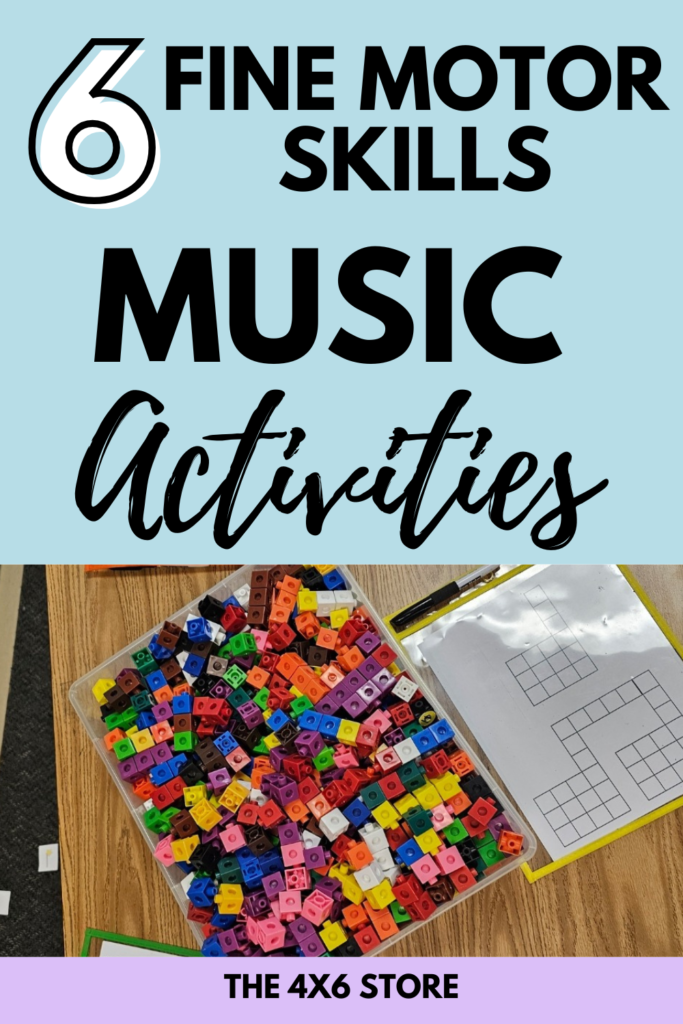
Coloring
Coloring is a fantastic activity for developing fine motor skills in young children. When kids color, they use small muscles in their hands, fingers, and wrists to hold crayons or colored pencils and make controlled movements on the paper. This repeated practice helps them build strength and coordination, which is essential for tasks like writing, cutting, and playing musical instruments. By learning to stay within the lines or shade specific areas, they also improve their hand-eye coordination and precision
The act of coloring requires children to use a pincer grasp, which is when they hold an object between their thumb and forefinger. This grasp is critical for many fine motor tasks and directly translates to skills needed for writing musical notation or pressing piano keys.
I typically will use coloring activities as way to keep little hands busy during listening stations or centers.
Play Dough
I know you are tempted to skip past this one – but please don’t! Hear me out first! I LOVE using play dough as a center activity.
Using play dough is an excellent way for children to develop their fine motor skills while having fun. As they roll, pinch, squeeze, and shape the dough, they strengthen the small muscles in their hands, fingers, and wrists. These actions are essential for tasks requiring precision, such as writing, cutting, or playing instruments. The soft, malleable nature of play dough also encourages kids to experiment with their grip and finger movements.

Blocks and Lego
I often used unit cubes as a center activity – not specifically for music, but just to use for fine motor skills. Blocks that snap together, like LEGO bricks, are an incredible tool for developing fine motor skills in children. As kids push, pull, and fit the pieces together, they practice using their fingers with precision and control.

You can also use blocks and building bricks as they get older to see relationships between different note values and the concepts of a measure. (More on that soon!)

Cut & Paste Activities
Because of the infinite options for creating cut and paste music activities for all of the different musical elements, this is a great way to incorporate fine motor activities into your music classroom. Using scissors to carefully cut along lines strengthens hand muscles, improves hand-eye coordination, and promotes bilateral coordination, where both hands work together. Gluing and pasting small pieces requires precise finger control, further refining dexterity.

Center Games
There are may center games and activities that have small pieces, such as puzzles, matching games, or sorting activities. Manipulating tiny objects requires precise finger control and strengthens the small muscles in their hands and fingers. As kids pick up, place, or move the pieces, they also improve hand-eye coordination and spatial awareness. Center games provide a perfect balance of learning musical concepts or notation and play – supporting both cognitive and physical growth.
Rubber Band Instruments
Rubber band instruments, such as simple homemade guitars or banjos, are a fun and effective way for children to develop fine motor skills. The creative process along with stretching the rubber bands requires careful finger movements. The act of adjusting the tension of the bands to create different sounds also enhances hand-eye coordination and teaches them about cause and effect in a creative way. These DIY instruments not only introduce children to basic concepts about sound and vibrations, but also provide a playful, hands-on experience that strengthens their motor skills through exploration and creativity.
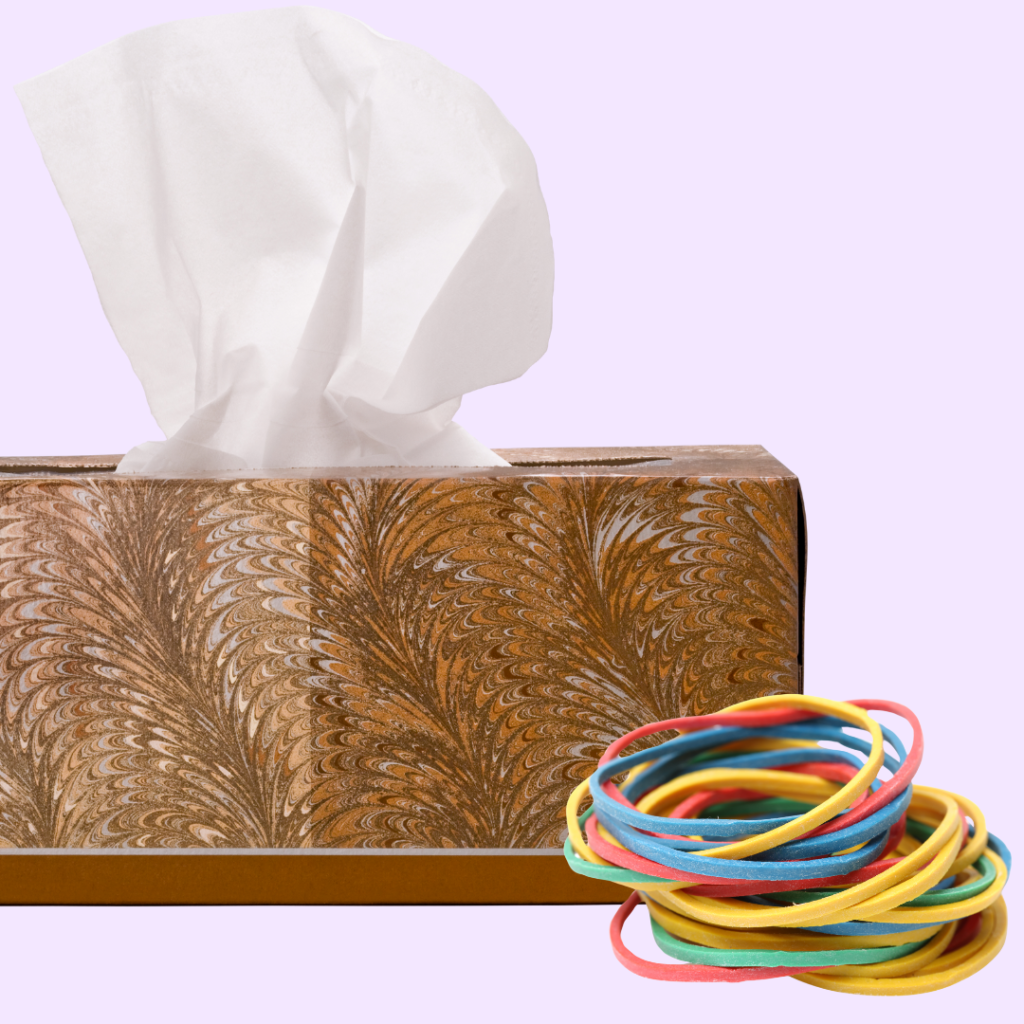
Conclusion
Including fine motor activities in our music classrooms does not need to be stressful. But recognizing the benefits of fine motor development in the music classroom will help your littlest musicians thrive. Let’s celebrate the small movements that make the big moments possible. and continue to cultivate these skills with intention and care.
